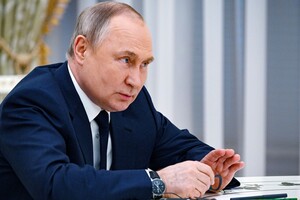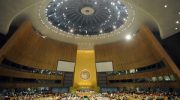The passage of a sanctioned cargo ship from Syria to a Russian port shows how Moscow is taking equipment home.

At the end of last month, a merchant ship under under US sanctions, passed through the Turkish Bosphorus strait on the way from Syria to Russia. European intelligence officials who monitored the Sparta II claim it carried military vehicles for Russian President Vladimir Putin's war in Ukraine, Bloomberg writes.
This ship, which eventually arrived at the Black Sea port of Novorossiysk, clearly demonstrates the Kremlin's efforts to obtain resources for the war in Ukraine, which has been going on for the sixth month in a row.
While Ukraine received billions of dollars worth of weapons from the United States and Europe to defend its territories, Russia must rely only on its own resources to support troops on the front line amid reports of significant casualties. According to US estimates, tens of thousands of Russian soldiers were killed or wounded, and thousands of armored vehicles were destroyed.
An official briefed on the details said the US government believes Russia used merchant ships to move military cargo across the Black Sea. European intelligence reported the same information.
The Sparta II almost certainly brought military vehicles from the Syrian port of Tartus, which is used by Russia, according to intelligence and satellite images from July 17-25 obtained by Bloomberg.
What weapons were on board — unknown It was seen in Syria with vehicles in the hold, was also spotted crossing the Bosphorus and later identified in Novorossiysk with at least 11 vehicles that were probably being unloaded.
Marine tracking data shows that the ship, which belongs to a company that was sanctioned by the US in May and is controlled by the Russian Defense Ministry, made the trip on those dates without interference from NATO member Turkey.
Sources claim that earlier this year, Russia used cargo ships of Oboronlogistika LLC on the same route. Previously, the same company repeatedly transported military cargo from Russia to Syria.
A representative of the US State Department forwarded relevant requests to the Turkish government in this regard. The Turkish official responsible for this area said that merchant ships are inspected only if there is verifiable data or suspicion of violations.
Russia has built up huge stockpiles of weapons during a decade-long modernization program overseen by Putin, so Kremlin officials deny any problems with replenishment. Still, American and European officials say the loss of a significant number of tanks and armored personnel carriers is forcing Moscow to deconserve its stockpile of old equipment, including decades-old T-62 tanks.
In the aforementioned Syria < strong>Putin has a certain number of his military contingent after ordering an operation in 2015 to support the country's President Bashar al-Assad. In 2017, Russian Defense Minister Sergei Shoigu said the military had tested more than 160 types of advanced weapons there, including fighter jets, laser-guided missiles, tanks, electronic warfare and air defense systems.
There are also signs that the Kremlin has sought additional resources elsewhere. In particular, according to some data, the Russian Federation transferred part of its human resources to Ukraine from Karabakh, as well as from South Ossetia.
In addition, last month, according to the CIA, Russia has approached Iran to try to acquire combat drones. North Korea, which has artillery systems of decent quality and, in addition, recognized the Kremlin-occupied Ukrainian territories of the Donetsk and Luhansk regions, could be another likely source of weapons supplies for the Russian army.
Related video
So Russian arms supplies from Syria likely contribute to its overall logistical support, as Novorossiysk is used to replenish bases in neighboring Crimea, which Putin annexed in 2014, and from there to the occupied Kherson Oblast and Zaporizhzhia in southern Ukraine. Recently, Russia has redeployed forces and means to this area, as it is expecting a counteroffensive by Ukraine in the Kherson region.


